Defined microbial communities and their soluble products protect mice from Clostridioides difficile infection
- PMID: 38280981
- PMCID: PMC10821944
- DOI: 10.1038/s42003-024-05778-6
Defined microbial communities and their soluble products protect mice from Clostridioides difficile infection
Abstract
Clostridioides difficile is the leading cause of antibiotic-associated infectious diarrhea. The development of C.difficile infection is tied to perturbations of the bacterial community in the gastrointestinal tract, called the gastrointestinal microbiota. Repairing the gastrointestinal microbiota by introducing lab-designed bacterial communities, or defined microbial communities, has recently shown promise as therapeutics against C.difficile infection, however, the mechanisms of action of defined microbial communities remain unclear. Using an antibiotic- C.difficile mouse model, we report the ability of an 18-member community and a refined 4-member community to protect mice from two ribotypes of C.difficile (CD027, CD078; p < 0.05). Furthermore, bacteria-free supernatant delivered orally to mice from the 4-member community proteolyzed C.difficile toxins in vitro and protected mice from C.difficile infection in vivo (p < 0.05). This study demonstrates that bacteria-free supernatant is sufficient to protect mice from C.difficile; and could be further explored as a therapeutic strategy against C.difficile infection.
© 2024. The Author(s).
Conflict of interest statement
The authors declare no competing interests.
Figures
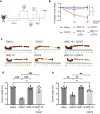
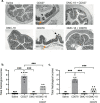
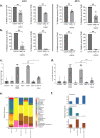
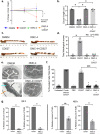
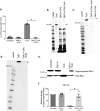
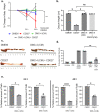
Similar articles
-
Mice colonized with the defined microbial community OMM19.1 are susceptible to Clostridioides difficile infection without prior antibiotic treatment.mSphere. 2024 Nov 21;9(11):e0071824. doi: 10.1128/msphere.00718-24. Epub 2024 Oct 29. mSphere. 2024. PMID: 39470217 Free PMC article.
-
Diluted Fecal Community Transplant Restores Clostridioides difficile Colonization Resistance to Antibiotic-Perturbed Murine Communities.mBio. 2022 Aug 30;13(4):e0136422. doi: 10.1128/mbio.01364-22. Epub 2022 Aug 1. mBio. 2022. PMID: 35913161 Free PMC article.
-
Clearance of Clostridioides difficile Colonization Is Associated with Antibiotic-Specific Bacterial Changes.mSphere. 2021 May 5;6(3):e01238-20. doi: 10.1128/mSphere.01238-20. mSphere. 2021. PMID: 33952668 Free PMC article.
-
Microbial and metabolic interactions between the gastrointestinal tract and Clostridium difficile infection.Gut Microbes. 2014 Jan-Feb;5(1):86-95. doi: 10.4161/gmic.27131. Epub 2013 Dec 11. Gut Microbes. 2014. PMID: 24335555 Free PMC article. Review.
-
Prevention and treatment of Clostridium difficile associated diarrhea by reconstitution of the microbiota.Hum Vaccin Immunother. 2019;15(6):1453-1456. doi: 10.1080/21645515.2018.1472184. Epub 2018 Jun 21. Hum Vaccin Immunother. 2019. PMID: 29781761 Free PMC article. Review.
Cited by
-
The Human Microbiome as a Therapeutic Target for Metabolic Diseases.Nutrients. 2024 Jul 19;16(14):2322. doi: 10.3390/nu16142322. Nutrients. 2024. PMID: 39064765 Free PMC article. Review.
-
Rational Design of Live Biotherapeutic Products for the Prevention of Clostridioides difficile Infection.J Infect Dis. 2025 Jul 11;231(6):1392-1406. doi: 10.1093/infdis/jiae470. J Infect Dis. 2025. PMID: 39316685 Free PMC article.
-
Methods of a Reproducible Mouse Model of Clostridioides difficile Infection to Investigate Novel Bacterial-Based Therapies.Methods Mol Biol. 2025;2942:103-116. doi: 10.1007/978-1-0716-4627-4_9. Methods Mol Biol. 2025. PMID: 40498310
-
Rational Design of Live Biotherapeutic Products for the Prevention of Clostridioides difficile Infection.bioRxiv [Preprint]. 2024 May 2:2024.04.30.591969. doi: 10.1101/2024.04.30.591969. bioRxiv. 2024. Update in: J Infect Dis. 2025 Jul 11;231(6):1392-1406. doi: 10.1093/infdis/jiae470. PMID: 38746249 Free PMC article. Updated. Preprint.
References
Publication types
MeSH terms
Substances
LinkOut - more resources
Full Text Sources
Miscellaneous

